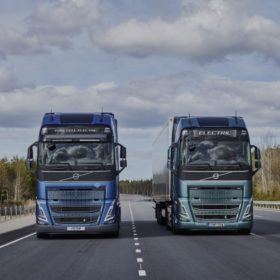The Hydrogen Stream: Egypt to host 3.6 GW of electrolyzers at Suez Canal
Globeleq has revealed plans to build a green hydrogen facility in the Suez Canal Economic Zone, and Air Liquide has agreed to run a hydrogen production unit for TotalEnergies in France. Doosan Fuel Cell, meanwhile, has said it will export 105 MW of hydrogen fuel cells to China by 2026.
The Hydrogen Stream: Germany to import green ammonia from Saudi Arabia from 2026
Germany has decided to build its first green ammonia import terminal in Hamburg, in collaboration with Air Products. Egypt, meanwhile, has signed $85 billion of hydrogen framework agreements.
The Hydrogen Stream: Hydrogen production from industrial byproducts
US scientists have reported efficient plasmonic photocatalysis for the production of hydrogen from hydrogen sulfide, with no external heat source. Egypt, meanwhile, has started commissioning Africa’s first integrated green hydrogen plant.
Subsea cable to bring wind, solar power from Egypt to Europe
Copelouzos Group plans to lay a submarine cable to link 9.5 GW of wind and solar power in Egypt to Greece’s Attica region. The project was recently included in the Entso-E 10-year development plan.
Ultra-fast synthesis of nanocomposites for sodium ion batteries, supercapacitors
Researchers in Egypt have developed a synthesis method that uses the high microwave absorbance of silicon carbide content in rice straw ash and takes just 60 seconds to produce sodium iron phosphates-carbon nanocomposites (NaFePO4-C), which can be used as sodium ion battery cathodes and as symmetric supercapacitors.
The Hydrogen Stream: Siemens commissions 8.7 MW electrolyzer in Germany
As Siemens commissions Germany’s second largest electrolyzer at the Energy Park in Wunsiedel, Engie has taken the Final Investment Decision for a project in Western Australia, scheduled for completion in 2024. Meanwhile, two reports shed light on the future of green hydrogen: on the demand side, the MENA region could use it to become the global leader of green steel; on the supply side, BNEF welcomes the support commitments coming from Europe and the United States.
The Hydrogen Stream: $8 billion green hydrogen facility near the Suez Canal
Egypt is taking several steps to support renewable and hydrogen projects, aiming to produce 42% of its electricity from renewable sources by 2030. Meanwhile, a team of researchers led by UCLA developed a method for predicting platinum alloys’ potency and stability; Iberdrola and bp are working on strategic collaboration, including large-scale green hydrogen production hubs in Spain, Portugal and the UK.
Photovoltaics and anaerobic digestion
Researchers in Egypt have studied the use of solar power and anaerobic digestion for a 6,300-square-meter farm capable of housing 200 head of milk/beef cattle. They found that this combination could achieve a cost of energy of $0.0226/kWh.
IFC announces $150m credit line, with focus on African solar
Egypt’s Elsewedy Electric, which has developed solar and storage projects on its home continent, has secured a new financing package, according to International Finance Corp.
The Hydrogen Stream: Volvo starts testing fuel cell electric trucks
Volvo said it will offer fuel cell electric trucks by the second half of the decade, while an airport in northern Japan has started working on a feasibility study for local hydrogen production. Uruguay, meanwhile, has presented a new hydrogen strategy.










